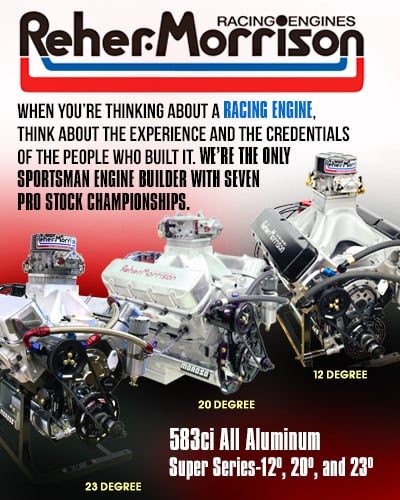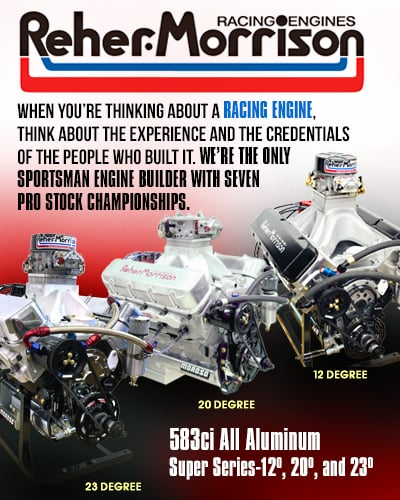ORIGINAL BLUE MAX FUNNY CAR OWNER SCHMIDT PASSES
Harry Schmidt, who adopted the nickname and likeness of a famous German military order and transformed it into one of drag racing’s most iconic symbols, lost his battle with cancer Monday in Dallas. He was 67. Services for the former car owner and crew chief are pending.
Schmidt first applied the now famous “Blue Max” name and logo to a fuel Funny Car in 1970 after seeing the World War I aviation drama of the same name.
Nevertheless, even before he was linked permanently to that famous emblem, he was prominent in drag racing as crew chief to ”Big Mike” Burkhart, for whom he served as crew chief in 1966 and 1967, first on an injected, nitro-burning 1966 Chevy II Funny Car and then on an injected, nitro-burning 1967 Camaro.
After a year away from the sport, Schmidt in 1969 commissioned Don Hardy Race Cars in Floydada, Texas, to build a Ford Mustang. He dropped a supercharged, nitro-burning 426 cid hemi prepared by Ramchargers Racing Engines of Taylor, Mich., in the chassis and raced it in 1969 with only “Harry Schmidt” ID on the side.
Harry Schmidt, who adopted the nickname and likeness of a famous German military order and transformed it into one of drag racing’s most iconic symbols, lost his battle with cancer Monday in Dallas. He was 67. Services for the former car owner and crew chief are pending.
Schmidt first applied the now famous “Blue Max” name and logo to a fuel Funny Car in 1970 after seeing the World War I aviation drama of the same name.
Nevertheless, even before he was linked permanently to that famous emblem, he was prominent in drag racing as crew chief to ”Big Mike” Burkhart, for whom he served as crew chief in 1966 and 1967, first on an injected, nitro-burning 1966 Chevy II Funny Car and then on an injected, nitro-burning 1967 Camaro.
After a year away from the sport, Schmidt in 1969 commissioned Don Hardy Race Cars in Floydada, Texas, to build a Ford Mustang. He dropped a supercharged, nitro-burning 426 cid hemi prepared by Ramchargers Racing Engines of Taylor, Mich., in the chassis and raced it in 1969 with only “Harry Schmidt” ID on the side.
Paul Gordon was the original driver and Mart Higgenbotham drove once at Tulsa International Raceway, but it wasn’t until Schmidt hired former Gene Snow crew chief Jake Johnston that things began to fall into place.
“I guess it was (the fall of 1969) that I saw a movie called ‘The Blue Max’ starring George Peppard,” Schmidt recently had recalled, “and I thought that the name had a nice ring to it. I loved that emblem.”
The “Blue Max” was the colloquial name applied to the Pour le Merite, Germany’s highest military honor from the days of the Prussian Empire through 1918 and World War 1. The medal itself, which was reproduced on the sides of all subsequent Blue Max race cars, consisted of a blue enamel Maltese Cross with eagles between the arms.
“Since I had a German last name and my Mustang was blue,” Schmidt said, “I decided that’s what we’d call the car when we started the 1970 season”
Schmidt and Johnston debuted the Blue Max Mustang at the 1970 NHRA Winternationals at Pomona, Calif., where it set top speed of the meet for Funny Cars at 203.61 mph.
In November, Schmidt and Johnston took the Blue Max to Manufacturers Funny Car Race at Orange County International Raceway in Irvine, Calif., at the time the largest and most prestigious Funny Car race in the world. During eliminations, Johnston ran the lowest elapsed time in the history of the class at 6.72 seconds and, in the final, he beat Rich Siroonian in “Big John” Mazmanian’s Barracuda on a holeshot, 6.89 to 6.88.
At the 1970 Supernationals at Ontario, Calif., Richard Tharp replaced Johnston as driver of “the Max” and won the 1971 IHRA Winternationals at Lakeland, Fla., while settling for runner-up honors to Don Schumacher at two other venues (Bristol, Tenn., and Rockingham, N.C.).
Nevertheless, Schmidt ran out of enthusiasm and money at about the same time and parked the operation in mid-1973.
Enter Raymond Beadle who, late in 1974, convinced Schmidt to partner with him in the resurrection of the Blue Max.
The new team of Beadle & Schmidt hit the track with an new Tony Casarez-built Blue Max Mustang II and, in dramatic fashion, won the Funny Car championship at the 1975 NHRA U.S. Nationals at Indianapolis, Ind., by beating the dominant driver of the era, Don “Snake” Prudhomme, in the final round.
The same year, the team won the first of its three IHRA Funny Car championships when Beadle went to the winners’ circle at Miami-Hollywood Dragway in Florida, Great Lakes Dragway at Union Grove, Wis., and Rockingham Dragway. He also was runner-up to Dale Pulde at Dragway 42 in West Salem, Ohio.
In 1976, Beadle bought Schmidt’s interest in the racing operation, the latter became a jewelry wholesaler in the Dallas-Fort Worth area and the former went on to take the “Blue Max” to series championships in NHRA and IHRA drag racing and the NASCAR Winston Cup Series in which a Blue Max Racing Pontiac driven by Rusty Wallace won the title in 1989.
All articles and photography published in CompetitionPlus.com are protected by United States of America and International copyright laws unless mentioned otherwise. The content on this website is intended for the private use of the reader and may not be published or reposted in any form without the prior written consent of CompetitionPlus.com.



































